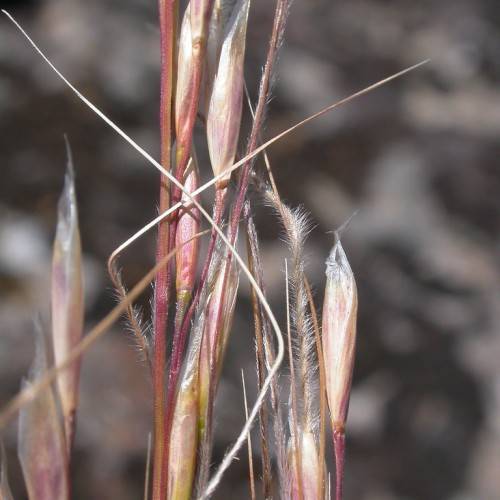
Thurber's Needlegrass
Achnatherum thurberianum
Watering:
Frequent
Hardiness Zone:
Sun:
full sun,part shade
Growth Rate:
Low
Drought Tolerant:
Yes
Salt Tolerant:
Yes
Care Level:
Moderate
watering
The California Needlegrass (Achnatherum occidentale subsp. californicum) should be watered on a regular basis, but not too frequently. It prefers well-drained, sandy or loamy soil with good water retention. Generally, it needs about 1 inch of water per week during the growing season (typically April through October). During the dry season (typically November through March) it benefits from additional waterings, as little as 0.5 inch a week, but no more than 1 inch. Water the plant deeply, but not too frequently, allowing it to dry between watering cycles. If the soil remains excessively wet, California Needlegrass may succumb to root rot and die.
sunlight
The amount and timing of light required by California Needlegrass vary depending on the time of year and the environment in which the plant is growing. In the coastal ranges of California, the most common growing region for this species, the average length of direct sunlight needed during summer months is 6 to 8 hours per day. During the colder winter months, California Needlegrass requires reduced amounts of direct light, with 4 to 6 hours daily being the ideal amount. California Needlegrass prefers light that is relatively evenly distributed throughout the day. The plant can also survive, though not thrive, in shaded conditions. In order to successfully grow California Needlegrass, it is important to provide a combination of direct and indirect sunlight throughout the day.
pruning
Pruning California Needlegrass (Achnatherum occidentale subsp. californicum) should typically be done twice a year; once in the early spring and once in the late fall. In early spring, the plant should be pruned to remove any dead material, as well as to control the size of the plant if necessary. Pruning in the late fall helps to retain a pleasant shape and control the size of the plant. When pruning either in the spring or fall, be sure to make clean cuts, and never remove more than 1/3 of the plant at 1 time. If left unpruned, California Needlegrass can become lanky and unruly.
